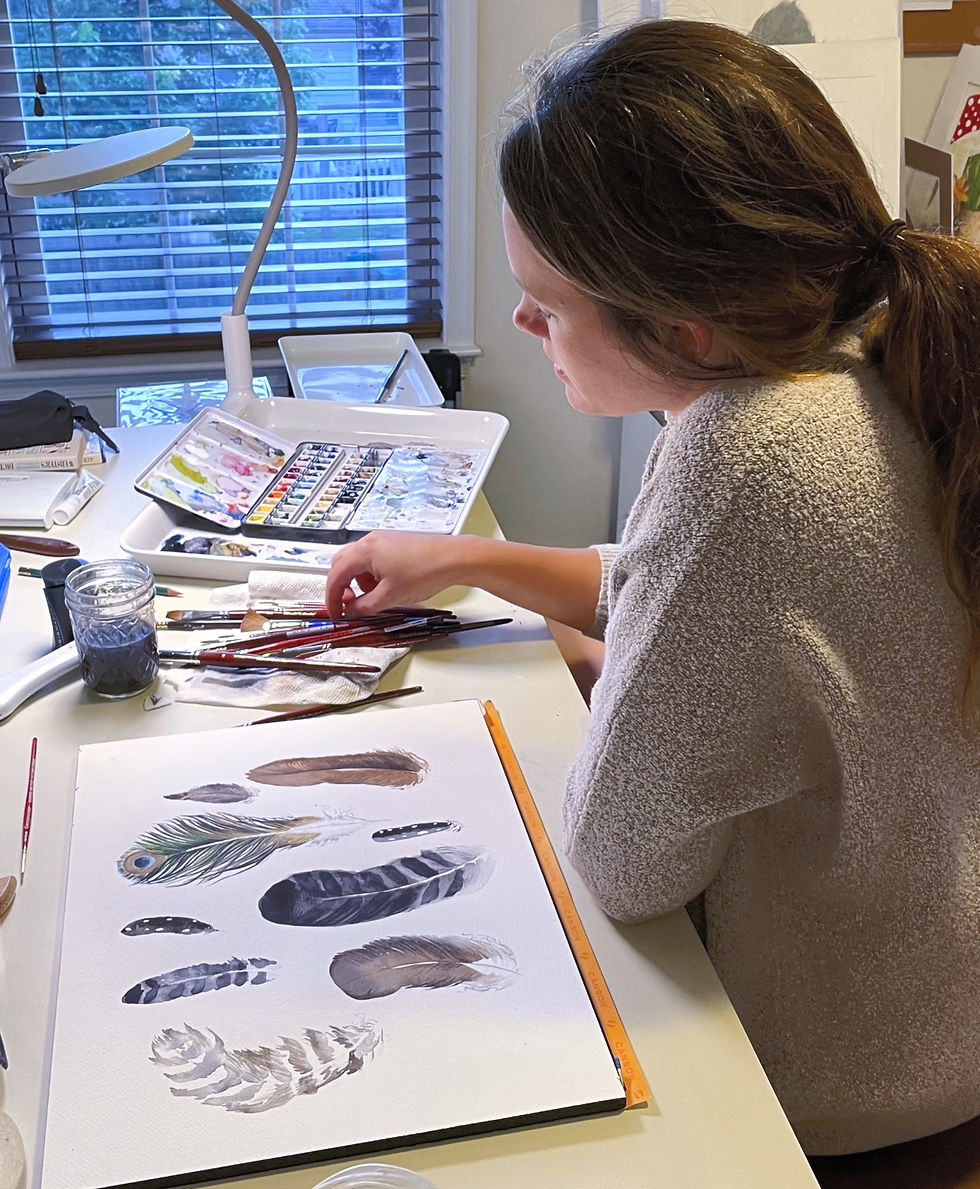Experimenting with Gouache
- Rebecca Cassity

- Jan 19, 2023
- 3 min read

Gouache is like watercolor’s bulkier cousin. It has many of the same components as watercolor, like water, natural pigment, and gum arabic. (Watercolor also has other additives as well.) But, gouache also has to have an element to make it more opaque. Sometimes that is calcium carbonate (chalk) or barite. This allows for deep color with also the versatility of being able to still manipulate it with water.
I started off painting solely with watercolor but after years I decided to experiment with gouache and to be honest I’m a little mad at myself that I didn’t explore it earlier. It is a favorite of traditional illustrators. They having been using it for centuries- like at LEAST twelve centuries. Persians and Egyptians used versions of gouache for illustrating. I’m no history buff but I do enjoy hearing about the history of art. No wonder the act of creating art and enjoyment of making it is so naturally engrained into our very being. The history it carries feeds our soul, connecting us to humans who lived centuries ago without even speaking a word.
Using gouache in addition to watercolor can emphasize certain elements in a piece of art: drawing the observer’s eye to a focal point, creating a heavier contrast, or creating more depth in certain parts of your watercolor. Just remember that it is opaque, so the last layer would be when you apply gouache to a dried watercolor to achieve some of these effects.
If you love digital art and use programs such as procreate, there is a gouache tool under the painting tool tab! It is so fun to use and I use it on my digital paintings so that I have a consistent look between my digital and traditional artwork. The upside to using procreate on an iPad is that you can use it anywhere. You can practice whenever it is convenient for you. The downside to using digital is that it’s not tactile. There’s a certain feel to when you are painting with gouache (or any other medium) that is satisfying to me personally. I plan on making another post about digital vs. traditional art and how they can actually work together to amplify your work.
If you are new to gouache you may be wondering what brushes to use? As a rule of thumb, we know there are different brushes divided in three main sections at the art store: watercolor, acrylic, and oil. All these have different textures and stiffness because they are made to hold their mediums effectively and transfer to a canvas (or paper). I use my watercolor brushes for gouache painting without fear of ruining the brush or the canvas. Watercolor brushes are softer and made to be absorbent to hold the watered down pigment and gouache is in the watercolor family. One of its main components is water and you add water to dilute it. It comes out of your brushes easily as well if you rinse with water. If my brushes need a deeper clean to get pigment out, I use “The Masters” Brush Cleaner and Preserver. It is a soap-like bar in a round container that is easy to use and store. I just wet my brushes, swish them around on the bar, get them a little sudsy, and rinse again. Then I reshape them and lay them flat to dry.
Like watercolors you are able to mix gouache into many different hues, tones, and shades so don’t feel like you have to buy more than the primary color pack, white, and black to start. I did a color study recently just using the primaries, white, and black. You can see the range below. There is phenomenal range. And since gouache is opaque you can work quickly in layers. The green block with the seashell in my artwork below, I painted the background and foreground in the same day within the same hour. In comparison, when I paint a watercolor background I am waiting sometimes a day for it to dry to paint the foreground. A hairdryer is also an excellent tool for drying work faster.
Overall, I will be using gouache for a lot of my work here on out. I’m looking forward to having it be a main player in my illustration toolbox. Hands down. Or, should I say, hands up painting. Always painting.








Comments